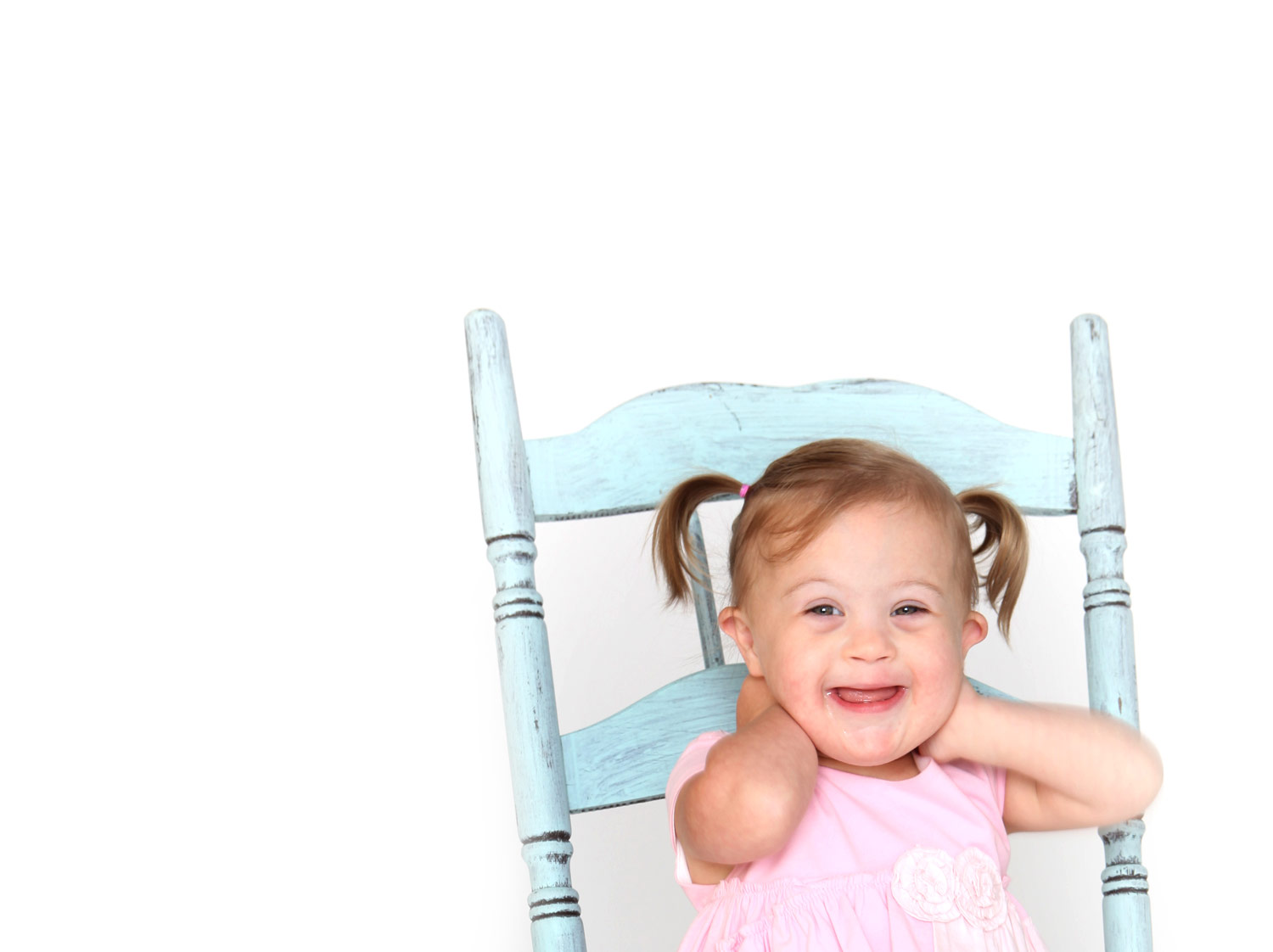Therapies
Meet Milestones with Physical and Occupational Therapy
In this section, we explore how physical and occupational therapy help develop the gross motor, language, and social skills that affect children with Down syndrome. Below is a chart of these milestones and a timeline of when you can expect to reach them.
| Milestone | Range for Children with Down Syndrome | Typical Range |
|---|---|---|
| Gross Motor | ||
| Sits Alone | 6 - 30 Months | 5 - 9 Months |
| Crawls | 8 - 22 Months | 6 - 12 Months |
| Stands | 1 - 3.25 Years | 8 - 17 Months |
| Walks Alone | 1 - 4 Years | 9 - 18 Months |
| Language | ||
| First Word | 1 - 4 Years | 1 - 3 Years |
| Two-Word Phrase | 2 - 7.5 Years | 15 - 32 Months |
| Social/Self-Help | ||
| Responsive Smile | 1.5 - 5 Months | 1 - 3 Months |
| Finger Feeds | 10 - 24 Months | 7 - 14 Months |
| Drinks From Cup Unassisted | 12 - 32 Months | 9 - 17 Months |
| Uses Spoon | 13 - 39 Months | 12 - 20 Months |
| Bowel Control | 2 - 7 Years | 12 - 20 Months |
| Dresses Self Unassisted | 3.5 - 8.5 Years | 3.25 - 5 Years |
Development Issues to Expect
Joints and Flexibility
Children born with Down syndrome may experience weak muscle tone (hypotonia) and joint ligaments that are too loose (ligament laxity). These two conditions lead to excessive joint flexibility. Children with excessive flexibility at their hips may keep their hips very wide apart when lying on their back, lying on their tummy, sitting, and standing. Children that tend to keep their hips in this wide apart position (hip abduction) may not develop the same movement patterns as children who are able to keep their legs positioned closer together. They may have decreased ability to twist their trunk (trunk rotation), poor trunk strength, and less effective balance reactions because they can use the excessive hip motion as a substitute for trunk motion.
Hip Helpers and Wraps
One approach to developing more normal movement patterns for children with Down syndrome is to use a figure-eight wrap or Hip Helpers to prevent the children from substituting hip motion for trunk motion. When the hips are gently kept in a more “hips together” position (hip adduction), children develop more normal trunk movement, trunk rotation, weight shifts, and balance reactions. Wearing a figure-eight wrap or Hip Helpers during all floor time as infants and babies can effectively improve the quality of the children’s movements as toddlers as well as later in life. Click here to learn more about Hip Helpers.
A small percentage of children with Down syndrome experience problems due to their hips slipping a little out of the hip socket (subluxation or dislocation). If you suspect your child is having a problem with hip dislocation, consult your physician. While wraps and Hip Helpers can be a tremendous help for most children with Down syndrome, children with hip dislocation should not use them.
Oral Motor Skills
Almost all children with Down syndrome will have oral motor issues ranging from very mild to severe. It is recommended by experts that you try to get your baby to suck a pacifier. This may take
some trial-and-error to determine the pacifier that works for them, and some babies just won’t take a pacifier. Sucking a pacifier will build oral motor control and helps develop the muscles needed for sucking, drinking, eating and speech. When your child is ready to begin drinking from a cup, it is important that they use a cup/straw for drinking instead of bottles and sippy cups.
Muscle Tone
Children with Down syndrome can have low muscle tone and extremely limber joints. This combination delays development in crawling and walking. When your child is lying on his/her back, they may lie with legs and arms splayed open to each side. It will be more beneficial for them to lie on their side with a wedge to keep them from turning to their back. This will keep legs together and arms at mid-line. When holding your baby, try to keep both arms in front of their body, not falling out beside them. Children with Down syndrome should never be held on your hip with their legs forced apart.
Sign Language
Even though your baby may not have a hearing impairment, it is beneficial to teach your baby some basic signs. This will aid in development of both receptive and spoken language. Some simple signs to start with include: more, please, thank you, eat, drink, milk, cracker, etc.

